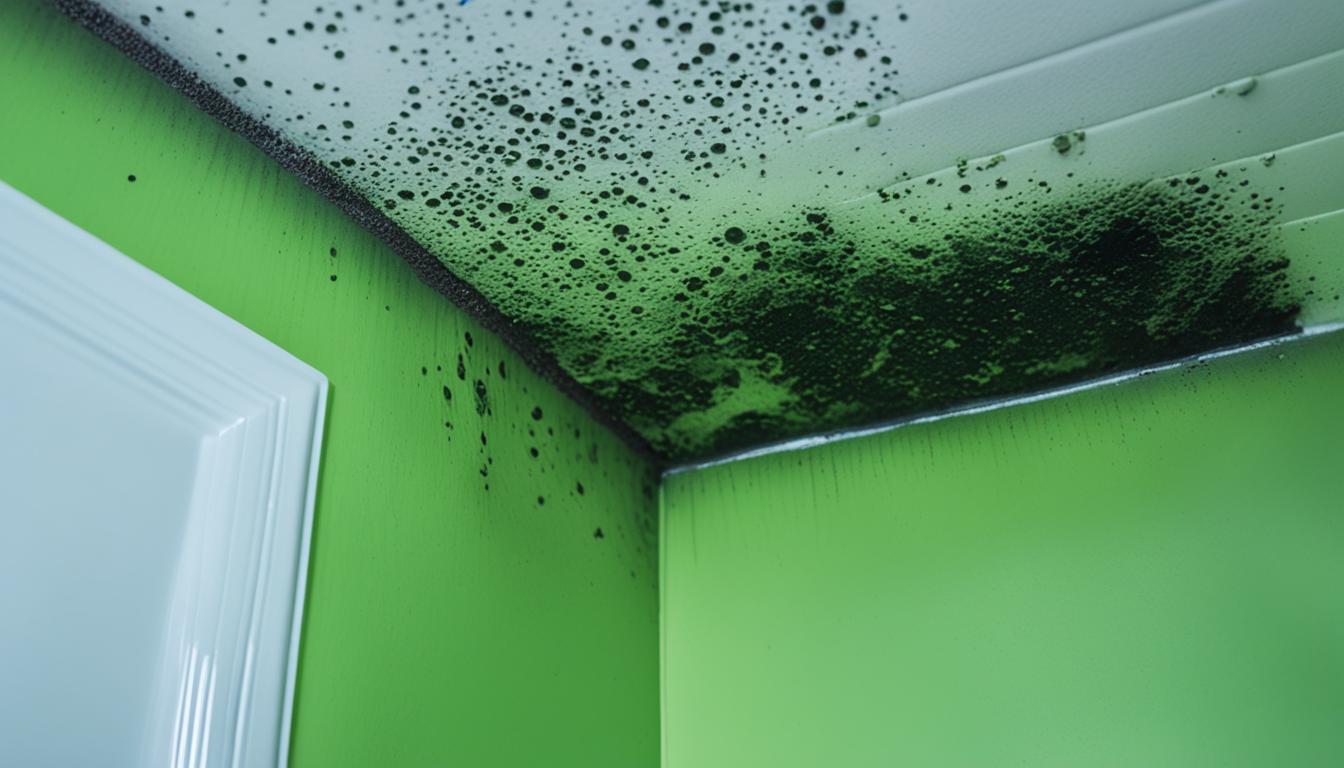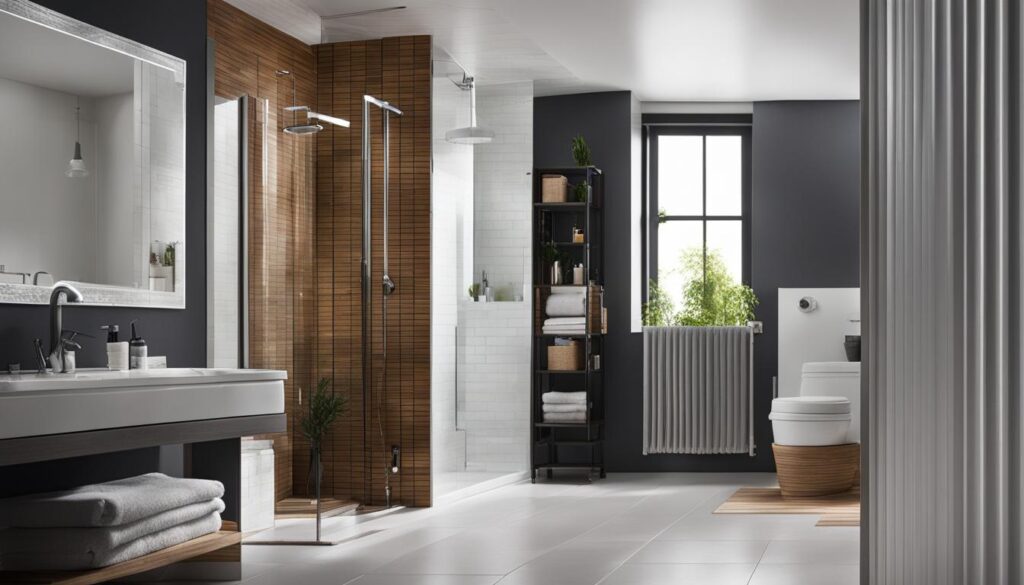
Mold in House Risks – Prevention & Removal Tips
Welcome to our comprehensive guide on mold in houses, where we will address the risks associated with mold growth, as well as provide you with effective tips for prevention and removal. Mold growth in homes can pose a serious threat to both the structural integrity of the house and the health of its occupants. It’s essential to understand the potential dangers and take necessary precautions to ensure a safe and healthy living environment.
Key Takeaways:
- Mold growth in houses can lead to various health issues, allergies, and respiratory problems.
- Preventing mold growth requires effective moisture control, proper ventilation, and regular inspections.
- Removing mold should be done promptly and efficiently, using appropriate techniques and equipment.
- Professional assistance may be necessary for severe mold infestations or if there are underlying structural issues.
- Regular maintenance and vigilance are key to keeping your home mold-free and ensuring the well-being of your household.
Understanding the Health Risks of Mold in House
Mold growth in houses can pose significant health risks to residents. Prolonged exposure to mold can lead to various respiratory issues, allergies, and other health problems. Understanding these risks is crucial for taking the necessary steps to prevent and address mold issues effectively.
Potential Respiratory Issues
One of the primary health risks associated with mold in houses is the development or exacerbation of respiratory problems. Mold spores and the mycotoxins they produce can irritate the respiratory system, leading to symptoms such as coughing, wheezing, chest tightness, and shortness of breath.
For individuals already living with respiratory conditions such as asthma or chronic obstructive pulmonary disease (COPD), exposure to mold can worsen their symptoms and increase the frequency of respiratory distress episodes. It is crucial for those with pre-existing respiratory issues to address mold problems promptly and take proactive measures to prevent mold growth in their homes.
Allergic Reactions
Many people are allergic to mold and may experience allergic reactions when exposed to it. Common symptoms of mold allergies include sneezing, runny or stuffy nose, itchy and watery eyes, and skin rashes. These symptoms can significantly affect the quality of life and overall well-being of individuals with mold allergies.
Furthermore, mold allergies can trigger or worsen asthma symptoms, leading to severe breathing difficulties and potential medical emergencies. Individuals who are aware of their mold allergies need to be particularly vigilant in identifying and addressing mold growth in their homes to minimize their exposure to allergens.
Other Health Problems
In addition to respiratory issues and allergic reactions, prolonged exposure to mold in houses has been associated with other health problems. Some individuals may experience fatigue, headaches, sinus congestion, and even neurological symptoms like memory loss or difficulty concentrating.
The severity of these health problems may vary depending on various factors, including the type of mold present, the extent of exposure, and an individual’s overall health condition. However, it is essential to take mold growth seriously and address it promptly to protect the health and well-being of everyone living in the house.
“The potential health risks of mold in houses should not be underestimated. Mold growth can lead to respiratory issues, allergies, and various other health problems. It is crucial to prioritize prevention and address mold issues promptly to maintain a safe and healthy home environment.”
By being aware of the health risks associated with mold in houses, homeowners can take proactive measures to prevent mold growth and address any existing mold issues promptly. The next section will provide practical tips and strategies for preventing and maintaining mold-free homes.

Prevention and Maintenance Strategies for Mold-Free Homes
To ensure a mold-free home, proactive prevention and regular maintenance practices are essential. By implementing effective strategies, homeowners can safeguard their houses against mold growth and maintain a healthy living environment for their families.
1. Moisture Control
One of the key factors that contribute to mold growth is excess moisture. To prevent mold from taking hold in your home, it is crucial to control and minimize moisture levels. Here are some measures you can take:
- Repair any leaks or water damage promptly, including roof leaks, pipe leaks, and plumbing issues.
- Ensure proper drainage around your home’s foundation to prevent water accumulation.
- Use exhaust fans in bathrooms, kitchens, and laundry rooms to reduce humidity levels.
- Avoid overwatering indoor plants and promptly address any water spills or leaks.
2. Proper Ventilation
Having adequate ventilation in your home helps to control humidity levels and prevent the buildup of moisture. Here’s how you can improve ventilation:
- Open windows and doors whenever possible to allow fresh air to circulate.
- Install and use exhaust fans in high-moisture areas to remove excess humidity.
- Ensure that air vents and ducts are not obstructed and are functioning properly.
- Consider using dehumidifiers in areas with persistent moisture problems, such as basements.
3. Regular Inspections
Regular inspections are crucial for early detection and prevention of mold growth. By identifying and addressing potential issues before they escalate, you can prevent costly and extensive mold remediation. Here are some inspection tips:
- Check for signs of water damage, such as stains on walls or ceilings.
- Inspect areas prone to moisture, such as bathrooms, kitchens, and basements, for any signs of mold or mildew.
- Keep an eye out for musty odors or an increase in allergy symptoms, as these could indicate mold presence.
- Consider hiring professional inspectors for a comprehensive evaluation of your home’s mold risk.

Maintaining a mold-free home requires proactive prevention measures and regular maintenance. By controlling moisture, ensuring proper ventilation, and conducting regular inspections, homeowners can create a healthy living environment for themselves and their families. Stay vigilant in implementing these strategies to enjoy the benefits of a mold-free home.
Effective Mold Removal Techniques for a Healthy Home
When it comes to maintaining a healthy home, tackling mold growth is crucial. Mold not only poses significant health risks but can also cause structural damage to your property if left untreated. In this section, we will explore some effective mold removal techniques that will help you create a safe and mold-free environment for you and your family.
The first step in mold removal is identifying the source of the problem. Inspect your house thoroughly to locate any areas of moisture, such as leaky pipes, roof leaks, or damp basements. Once you have identified the source, addressing it is essential to prevent further mold growth. Fixing the underlying issue will make the mold removal process more effective and long-lasting.
If you are dealing with a small area of mold growth, there are several DIY options you can consider. One popular method is using a mixture of bleach and water to scrub away the mold. Remember to wear protective gloves and a mask while doing so. Alternatively, you can use vinegar, hydrogen peroxide, or commercially available mold removal products. However, it is important to note that these DIY techniques may not be suitable for extensive mold infestation or health-compromised individuals, in which case seeking professional assistance is highly recommended.
When it comes to mold removal, it is crucial to prioritize safety. If you have a large mold problem, extensive mold growth, or are unsure about the best course of action, it is best to consult a professional mold remediation service. These experts have the knowledge, skills, and equipment to safely and effectively remove mold, ensuring a healthy and mold-free home.




